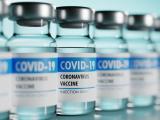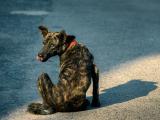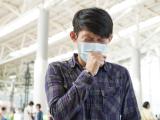Sep 9, 2003 (CIDRAP News) – Chinese scientists found that animals sold at street markets in Guangdong, China, carried a coronavirus nearly identical to the SARS coronavirus, according to a report published recently in Science.
The animal viruses were found in Himalayan palm civets and raccoon dogs, which were sold for food in the markets, according to the report. The findings indicate a route of transmission between species but do not reveal whether these animals are the virus's natural reservoir or contracted it from another source, according to the report.
The researchers used nasal and fecal swabs from 25 animals of eight different species, including the civet, hog-badger, raccoon-dog, beaver, Chinese muntjac, domestic cat, Chinese hare, and Chinese ferret-badger. The animal coronavirus isolates were "99.8% homologous" to the human SARS coronavirus, but all the animal isolates had a 29-nucleotide sequence that is not found in most human SARS coronavirus isolates, according to the report.
Last month Chinese officials lifted a ban on the sale of civets in markets and at restaurants, according to the Associated Press. The ban had been in place since May in an effort to curb the spread of SARS. The authors of the Science report state, "Our findings suggest that the markets provide a venue for the animal SCoV-like viruses [novel coronavirus] to amplify and transmit to new hosts, including humans and this is critically important from the point of view of public health."
The scientists also tested people who worked in the market for SARS antibodies. Forty percent of animal traders and 33% of workers who slaughtered animals had antibodies to the SARS virus, according to the report. In contrast, only 5% of people who sold vegetables had antibodies to the virus. None of the workers who tested positive for antibodies reported any illness in the previous 6 months, suggesting that a person could be an asymptomatic carrier of the SARS virus.
The Chinese findings are significant for a couple of reasons, according to Henry L. Niman, PhD, a surgery instructor at Harvard Medical School who has closely followed SARS developments. First, a number of new mutations were identified, which will be helpful in tracing the SARS virus to its natural animal reservoir. The sequencing may also provide some molecular evidence as to when the jump from animals to humans occurred, Niman told CIDRAP News.
"These findings assist in tracing the animal-to-animal transmission and the animal-to-human transmission. If SARS does re-emerge, the sequencing of the new isolate will show us whether the virus is re-emerging from animals or from the virus already in the human population. That will be a critical question," Niman said.
From a public health perspective, it may be possible to test animals at breeding farms to determine if they are carrying the virus before they are sold to markets and restaurants, according to Niman. "I think there should be some type of controls," he said. "Without controls in place, it's almost like playing roulette. You're hoping the next animal purchased at the market won't cause disease."
Guan Y, Zheng BJ, He YQ, et al. Isolation and characterization of viruses related to the SARS coronavirus from animals in southern China. Science 2003 (published online Sep 4) [Full text]



















